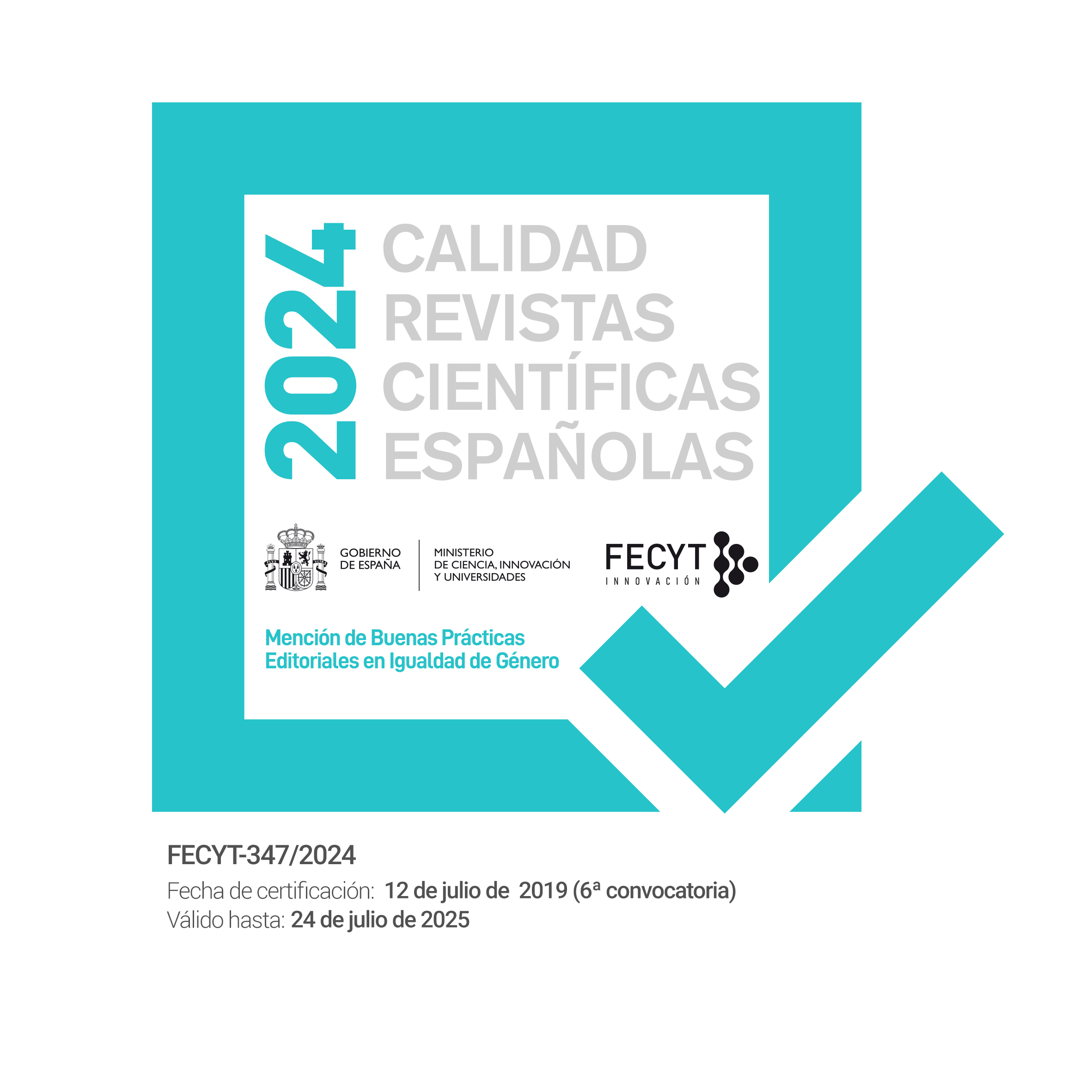La casa como puerta de entrada hacia un orden arquetípico en la obra plástica de Thomas Virnich
DOI:
https://doi.org/10.5944/etfvii.5.2017.16191Palabras clave:
Thomas Virnich, escultura alemana, arquetipo, espacio, casa, German Sculpture, Archetype, Space, House.Resumen
La imagen de la casa cumple con un papel axial en la obra plástica del artista alemán Thomas Virnich. Su significación, estudiada a lo largo de estas páginas, permite comprender las búsquedas del escultor y, en consecuencia, acceder a su universo imaginario. Junto a esta primera labor, se observará el papel que la idea de centro y la de lo fronterizo cumplen en su trabajo, aspectos relacionados en Virnich con un medianamente latente ideario social. Por último, podremos observar cómo el rechazo hacia una visión unidireccional de la realidad se expone con evidencia mediante el intento del escultor de aunar dualidades convencionales: superior / inferior, interior / exterior, real / irreal, positivo / negativo, etc. Estudiaremos todo ello en función de algunos presupuestos antropológicos y arquetípicos.
The image of the house works as an axis in Thomas Virnich’s sculptures. The meaning of the house will be analysed in this study and will let us understand the artist’s research, then having an insight of Virnich’s imaginary universe. Besides, we will show the role of two significant concepts in his work: centre and border. Finally, we will explore the artist’s rejection of a unidirectional view of the reality. This last issue it is obvious in Virnich production due to his attempt to join through his sculptures different dualities such as upper/lower, inner/outer, real/unreal or positive/negative. This paper studies the role of the house following an anthropological and archetypical approach.
Descargas
Citas
CHRISTALLER, Walter: Die zentralen Orte in Süddeutschland. Darmstadt: Wissenschaftliche Buchgesellschaft, 1980.
CIRLOT, Juan Eduardo: Diccionario de símbolos, Madrid, Siruela, 2014.
CORTÁZAR, Julio: Cuentos completos I, Madrid, Alfaguara, 2010.
FOUCAULT, Michel: Surveiller et punir, Paris, Gallimard, 1993.
GERCKE, Hans: “Hüllen häufen sich zum Körper”, en Katalog Thomas Virnich, Bonn, Bonner Kunstverein / Museum Wiesbaden / Heidelberger Kunstverein, 1988, 22-23.
LITTMANN, Klaus: “Littmann Kulturproject”. En: <http://www.klauslittmann.com/es/proyectos/catacumbas-volantes-zurich-2010> [16.03.2016]
NEUFELDT, Wilhelm: “Auf der Suche nach dem eigenen Standort oder Bagdag und seine Folgen”, en Katalog Thomas Virnich, Bonn, Bonner Kunstverein / Museum Wiesbaden / Heidelberger Kunstverein, 1988, 48-58.
POHLEN. Annelie: “Der Verlust an Spiel ist zugleich auch der Verlust an Ernsthaftigkeit”, en Katalog Thomas Virnich, Bonn, Bonner Kunstverein / Museum Wiesbaden / Heidelberger Kunstverein, 1988, 26-28 / 97-101.
RATTEMEYER, Volker: “‘I want to make the world mine in my imperfection’. Notes on the sculptural happiness of Thomas Virnich.”, en Thomas Virnich. Fliegende Katakomben / Flying Catacombs, Nürnberg, Verlag für modern Kunst Nürnberg, 2001, 99-115.
SCHRÖER, Carl Friedrich: “Glück und Unglück”, en Thomas Virnich, alles wirklich, Hannover, Verlag Th. Schäfer, 1996, 7-16.
TACKE, Christine: Katalog Thomas Virnich, München, Kunstraum München / Institut für modern Kunst Nürnberg, 1996.
VV. AA.: Katalog Thomas Virnich, Bonn, Bonner Kunstverein / Museum Wiesbaden / Heidelberger Kunstverein, 1988.
VV. AA.: Thomas Virnich, alles wirklich, Hannover, Verlag Th. Schäfer, 1996.
VV. AA.: Thomas Virnich. Fliegende Katakomben / Flying Catacombs, Nürnberg, Verlag für modern Kunst Nürnberg, 2001.
SOMBART, Werner: El burgués, Madrid, Alianza, 2006.
WESPE, Roland: Katalog Thomas Virnich, Kunstverein / Kunstmuseum St. Gallen, St. Gallen, 1989.
WUNN, Ina: Las religiones de la prehistoria, Madrid, Akal, 2012.







